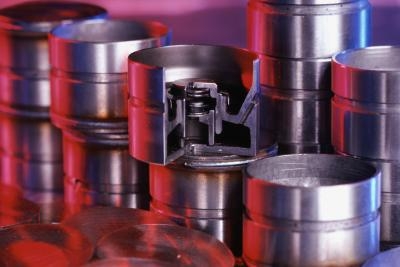
Piston rings for diesel and gas engines perform a very important function in the engine. They form a tight seal between the piston skirt and the cylinder wall to keep combustion gases confined. Any excessive gaps or open seams between the piston rings and cylinder walls creates a blow-by effect, which causes the loss of combustion power. With the installation of new or old rings, the end gaps of the piston rings must meet certain tolerances. If the ring end gaps do not fall within manufacture's specification, excessive blow-by and oil consumption can result. Calculating diesel piston ring end gap must be performed during major engine overhaul.
Organize the piston rings in sets, according to which cylinders they belong to. A set will consist of a bottom oil ring and two compression rings, or a top ring sometimes called an expansion ring. Make certain the cylinders can be accessed easily and they have been cleaned free of all carbon and oil traces. Wipe the interiors of all the cylinders with a light coat of machine oil.
Compress one of the oil ring retainer rings with your fingers -- the oil ring has three pieces, two rings and an inner core. Push the ring down into the cylinder from the top, setting it horizontal. Use an old piston to push it down two inches into the bore; measure the depth of this distance with a ruler. Stick a feeler gauge blade inside the gap between the two ends of the ring.
Find the blade that fits snug into the gap, without being forced or fitting too loosely. Record that blade thickness in thousandths of an inch on a piece of paper. Use the piston to push the ring down five inches into the bore; measure the distance with a ruler. Use the feeler gauge to measure the gap and record the number on paper.
Place the the next oil ring into the cylinder bore two inches down, using the piston, and use the feeler gauge blade to make the same measurement. Record the number on paper, then push it down five inches and check the measurement with the feeler gauge. Record the number. Place the oil ring core at the two and five-inch depths and calculate the feeler gauge thickness on paper, as you did with the others.
Switch to your second cylinder and follow the exact procedure for placing the rings in the cylinders at the correct depths, measuring the gaps with the feeler gauge and recording the numbers. When you have finished, you will have numbers for three sets of rings for however many cylinders your engine has. Refer to your diesel repair manual for the maximum allowable tolerances for your piston ring end gaps.
Determine if any of the ring gaps in any cylinder exceed the maximum allowable manufacture's specification, at both the two and five-inch depths. If the ring gaps measure to wide, they will have to be replaced with over-sized rings. If any of the ring end gaps show decreased sizes, the ends of the rings must be filed down with a straight machinist's file to bring them within specifications.